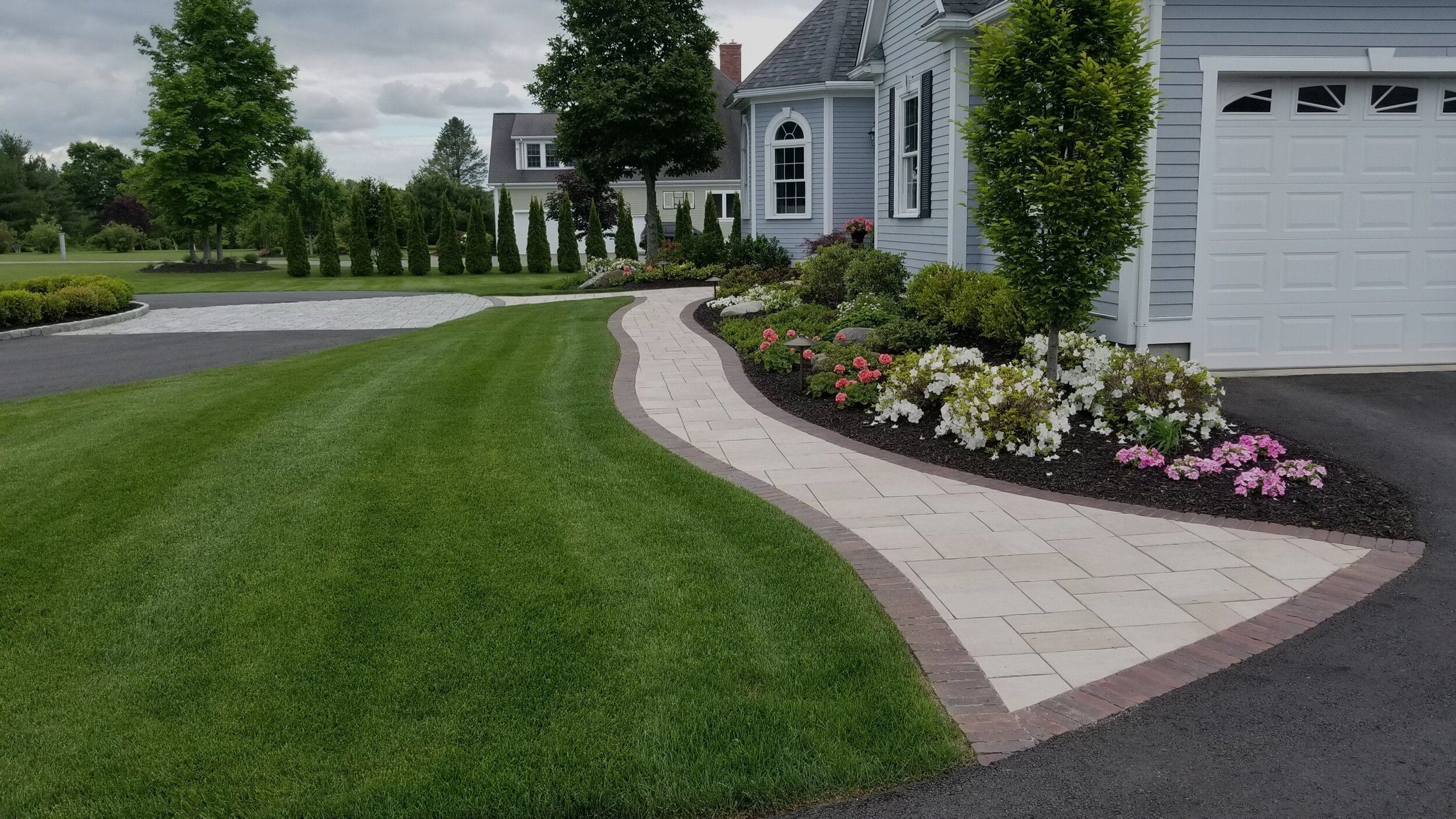A Comprehensive Overview to Creating and Implementing Effective Landscape Design Solutions
The art and scientific research of landscaping prolong beyond simple aesthetic appeals; they involve a thoughtful assimilation of design concepts, environmental stewardship, and functional implementation. What methods can one use to guarantee these landscapes not just flourish however also prosper in harmony with their surroundings?

Understanding Landscape Layout Principles
One could question what foundational aspects add to reliable landscape layout. At its core, successful landscape layout rests on several vital principles that guide the setup and selection of components within a space. These concepts include unity, rhythm, balance, and percentage, each serving to produce an unified outside setting.
Unity refers to the natural connection amongst various parts, making sure that they work with each other aesthetically and functionally. Balance can be attained through balanced or asymmetrical arrangements, enabling the landscape to really feel stable and welcoming. Percentage includes recognizing the scale of aspects in connection with each various other and the surrounding atmosphere, promoting aesthetic harmony and comfort.

Examining Your Outdoor Room
Before carrying out the concepts of landscape design, a thorough evaluation of your exterior space is important. This preliminary analysis helps define the range of your landscape design task and ensures that your style lines up with the one-of-a-kind attributes of your residential or commercial property. Begin by evaluating the measurements of your space, taking specific measurements to comprehend the readily available location for numerous aspects such as patio areas, yards, and pathways.
Next, observe the existing features of your landscape, including topography, dirt top quality, and water drainage patterns. These variables significantly influence plant option and placement. Additionally, evaluate the sunlight exposure throughout various locations throughout the day, as this will certainly affect the types of plants that thrive in your garden.
Take into consideration the microclimates developed by structures, trees, and various other challenges, as they can impact temperature and moisture degrees. Last but not least, take note of any kind of existing plants or hardscape components that you want to keep or remove. This thorough examination lays the groundwork for a well-informed and effective landscape design option, ensuring that your layout is not just aesthetically pleasing yet likewise functional and lasting for several years to find.
Sustainable Landscape Design Techniques
These techniques not only advertise ecological equilibrium yet also enhance the functional and aesthetic value of a landscape. Applying effective watering systems, such as drip watering, minimizes water waste and guarantees that plants obtain adequate moisture (Palm Desert Landscaping).

Another efficient technique is the tactical positioning of trees and shrubs to provide natural windbreaks and color, hence lowering energy prices (Palm Desert Landscaping). Rain gardens can be integrated right into the original site landscape design to handle stormwater drainage effectively, filtering contaminants prior to they enter waterways
Selecting the Right Plant Kingdoms
Picking the right plants for your landscape is essential to accomplishing both visual charm and environmental consistency. The procedure begins with an understanding of your local climate, soil problems, and the specific microenvironments within your landscape. Assessing aspects such as sunshine direct exposure, moisture levels, and existing flora will assist you select plants that prosper in your one-of-a-kind setup.
Consider incorporating native plants, as they are well-adapted to regional problems, call for much less upkeep, and assistance regional wild animals. Furthermore, choosing a varied variety of types can boost biodiversity while reducing the risk of disease and insect outbreaks. It is vital to examine the growth practices, flowering periods, and seasonal colors of potential plants to develop a vibrant and natural landscape.
Moreover, think of the intended use of the room; for example, if the location will experience high foot traffic, decide for resistant ground covers. By attentively selecting plants that align with both your ecological needs and aesthetic goals, you can produce a sustainable landscape that not only enhances your residential property yet likewise contributes positively to the surrounding ecological community.

Application and Upkeep Techniques
As soon as the right plants have actually been picked for your landscape, the focus moves to reliable execution and recurring upkeep techniques. Effective installment begins with proper website preparation, which consists of soil screening to determine nutrient degrees and pH, complied with by changing the soil as needed. Meticulously prepare plants according to their growth routines and light needs, guaranteeing appropriate spacing to advertise healthy and balanced growth.
Irrigation is my response an essential element of implementation. Establish a watering schedule that thinks about the particular requirements of each plant types, readjusting for seasonal modifications. Making use of drip watering systems can improve water performance and minimize runoff.
Upkeep approaches have to be applied to make sure the longevity and vigor of your landscape. Routine jobs consist of weeding, mulching, and pruning to control development and avoid disease. Fertilization ought to be carried out based upon dirt tests, providing the necessary nutrients without over-fertilizing.
Keeping an eye on for insects and diseases is important; early discovery can stop significant damages. Seasonal modifications to maintenance routines, such as preparing and winterizing perennials for springtime growth, will certainly make sure that your landscape remains aesthetically enticing and healthy and balanced year-round.
Conclusion
Successful application and continuous upkeep better make sure the long life and vitality of landscapes. By incorporating these elements, landscapes can be transformed into beautiful, useful settings that advertise biodiversity and website here add positively to community health.
One might question what foundational aspects add to efficient landscape style. At its core, effective landscape layout pivots on numerous vital concepts that direct the arrangement and option of elements within an area.Selecting the right plants for your landscape is critical to achieving both visual appeal and eco-friendly harmony. It is crucial to evaluate the development practices, flowering periods, and seasonal colors of prospective plants to develop a dynamic and cohesive landscape.
Once the appropriate plants have been picked for your landscape, the emphasis shifts to efficient execution and ongoing upkeep approaches.